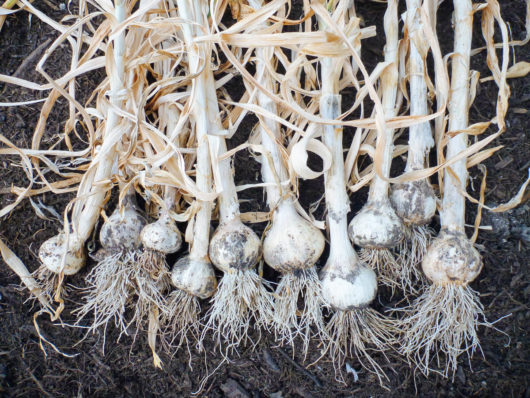
Your garlic cloves went in the ground last October, grew through winter and spring, and now that it's May, they're ready to be plucked from the garden, right? Well, maybe.
Garlic is one of those things where timing is everything, and the harvest period can span from late spring through late summer, depending on the weather and the variety of garlic grown. But since the bulbs are all underground, how can you really tell when your garlic is ripe for the pickin'?
The short answer is: It's all in the leaves.
But don't be fooled by its allium cousin, the onion. When onions have stopped growing, their leaves begin to lose color and wilt. The tops will dry up and flop over, signaling the time to harvest. Most onion bulbs have pushed themselves out of the soil and it's easy to see whether they've fully matured.
Garlic bulbs, on the other hand, remain below ground during development. The trick of knowing when to harvest garlic is looking at how many leaves are left on the plant.
Each leaf above ground indicates a layer of protective paper wrapped around the bulb. A garlic plant with 10 green leaves, for example, will have 10 layers of bulb wrappers.
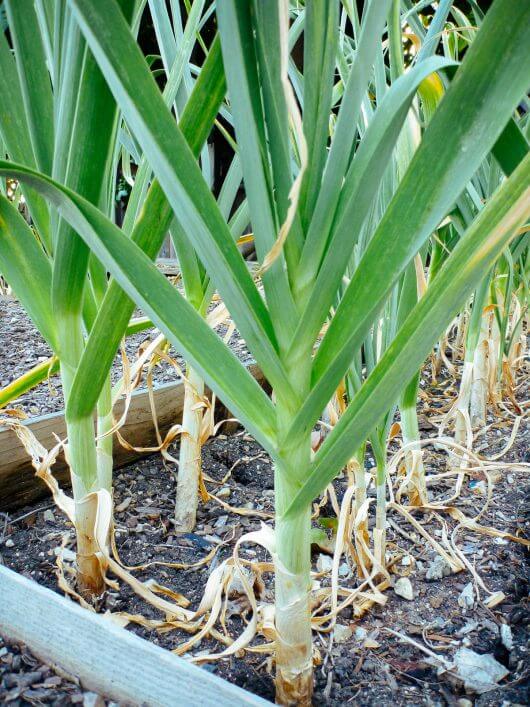

While there's no standard number of leaves that garlic should have, a reliable harvest indicator is when half the leaves have died off, and half are still green. The leaves start to die off from the bottom up.
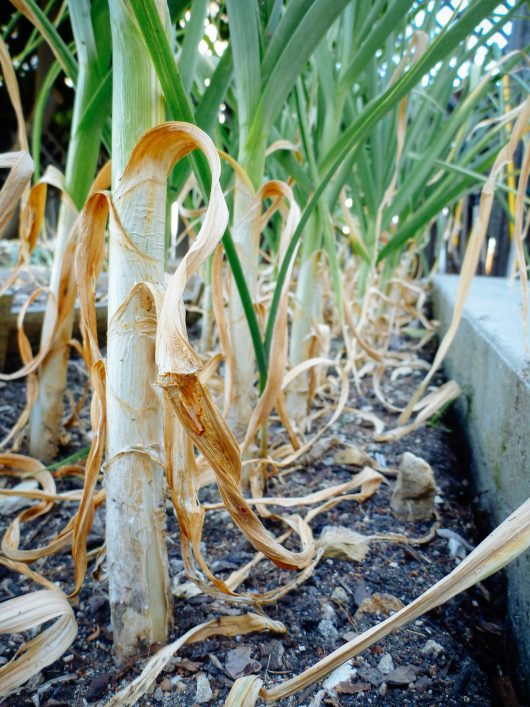
When most of your crop has reached this stage (aim for at least 50 to 75 percent of your crop, assuming you planted them all at the same time), stop watering for at least a week and allow the soil to dry out a bit to prevent rot and make harvesting easier.
It's a good idea to lightly dig into the soil around the bulb (taking care not to damage any of the wrappers or cloves) and check its size without digging the whole thing up. If the bulb looks small, pat the soil back down and wait a few days before you check again. If the bulb looks substantial, the wrappers tight, and the cloves well-formed, it's ready to be pulled.
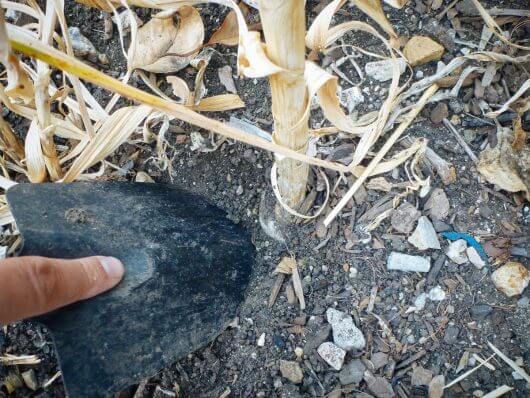
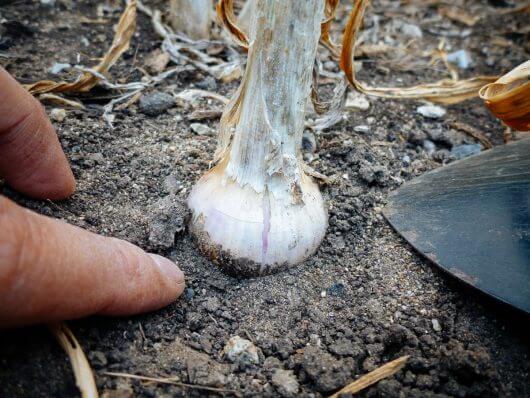
Just don't wait until all the leaves have died back before harvesting. Without the bulb wrappers protecting the garlic head, the cloves may separate and the garlic won't store well. Over-ripened bulbs also tend to divide and form shoots from each clove (looking like a Siamese twins version of garlic… but still edible, as I've found from experience).
At harvest time, carefully loosen the soil around your bulbs and gently pull the garlic out from the base of its stem, at its neck. Brush off any excess dirt that falls off easily but do not wash your garlic or remove the bulb wrappers.
Washed garlic tends to accumulate extra moisture in the bulb that may lead to fungal infestations. It's also additional time and effort that simply isn't necessary, and I am all for efficiency in the garden!

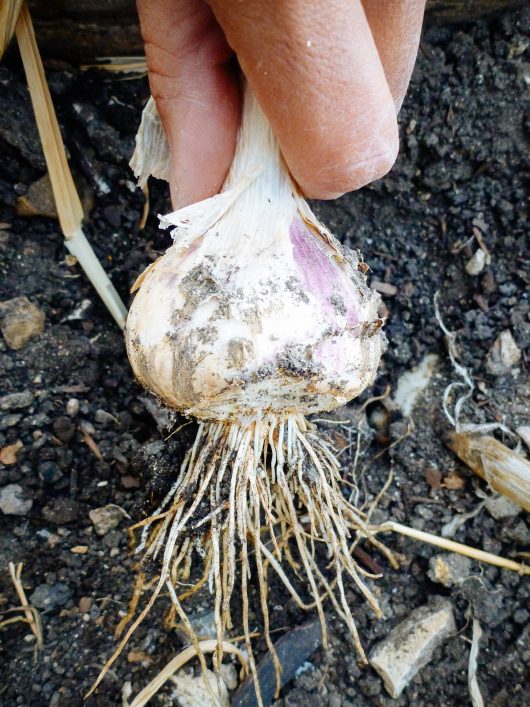
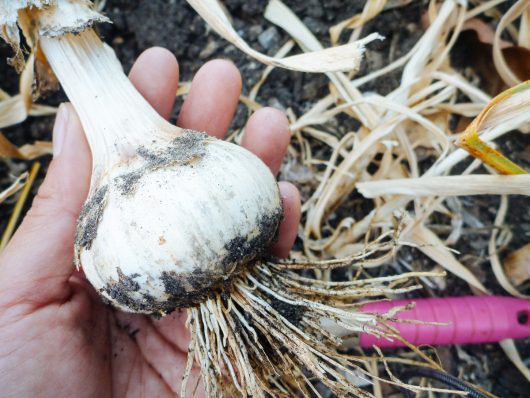
If you plan to eat your garlic right away, use scissors to trim the leaves and roots so you can store them neatly in the kitchen. Garlic that may have been cosmetically damaged during harvest (but are still edible) should also be eaten first, as they'll decline in quality sooner.
If you want to prepare your garlic for long-term storage, however, keep the leaves and roots intact while you cure your crop.
Generally, Asiatic and Turban varieties of garlic mature first in the season (as early as May in some areas), while Silverskins mature last (in July or August). There can be a six- to eight-week span between the time the earliest garlics are ready to when the latest-maturing garlics are pulled from the ground. Smaller plants will often mature earlier than larger plants.
For example, I once planted Ajo Rojo (a Creole garlic) and Siciliano (an Artichoke garlic) in October in my Southern California garden, and both were picked about two weeks apart in late May and early June. These spring harvests are typical of warmer regions, especially for cultivars that are well suited to the climate.
Garlic maturity from earliest to latest:
| Cultivar | Maturity |
| Turban | May to June |
| Asiatic | May to June |
| Artichoke | June to July |
| Rocambole | June to July |
| Creole | June to July |
| Glazed Purple Stripe | July |
| Purple Stripe | July |
| Marbled Purple Stripe | July |
| Porcelain | July to August |
| Silverskin | July to August |
In northern climates, harvest from fall plantings typically occur in late July to August. In southern climates, harvest depends on the actual planting date. Your harvest period is also determined by the current weather and soil conditions, so even if you grew the same cultivar of garlic this season, it may not mature at the same rate as last season.
Since there are no hard-and-fast dates to go by, the best way of knowing when to harvest garlic is to start paying attention to the leaves in spring.
Happy harvesting!
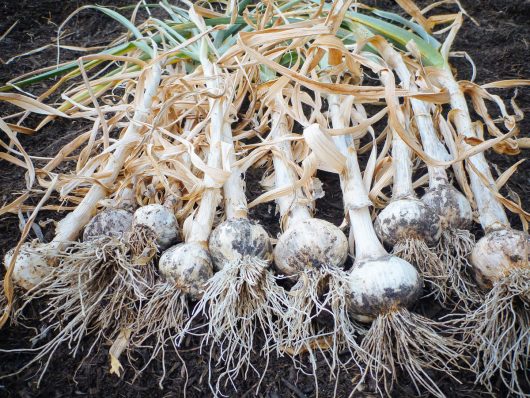
Take the next step with your garlic harvest:
This post updated from an article that originally appeared on July 9, 2011.
The post The Trick of Knowing When to Harvest Garlic appeared first on Garden Betty.
Spring is here! And to help you figure out what to do with all those weird vegetables and parts you thought you couldn't eat, The CSA Cookbook makes an excellent addition to your cooking or gardening library.
from Garden Betty https://ift.tt/2GaBFAw
No comments:
Post a Comment